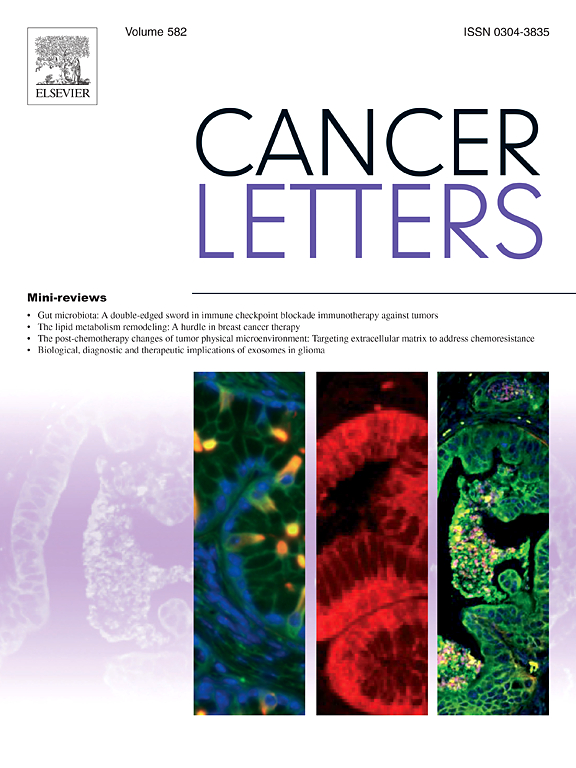Perineural invasion in cervical cancer
IF 9.1
1区 医学
Q1 ONCOLOGY
引用次数: 0
Abstract
Perineural invasion (PNI), the neoplastic infiltration of peripheral nerves, is recognized as the fourth mode of tumor metastasis and invasion. PNI is defined as a critical pathological feature observed across various cancers and is associated with poor prognosis. Recent studies have demonstrated that PNI also occurs in cervical cancer. Nerve-sparing radical hysterectomy (NSRH) has been promoted as the preferred approach for radical surgical resection of cervical cancer, as it reduces postoperative complications such as bladder, rectal, and sexual dysfunction. However, the presence of PNI has become a contraindication for NSRH. Despite the increasing volume of studies on PNI, the underlying mechanisms of its pathogenesis remain largely unclear. In this review, we discuss the innervation, characteristics, preoperative prediction and diagnosis of PNI in cervical cancer, along with its underlying mechanism, paving the way for advancements in treatment strategies and improving the prognosis for cervical cancer patients.
求助全文
约1分钟内获得全文
求助全文
来源期刊

Cancer letters
医学-肿瘤学
CiteScore
17.70
自引率
2.10%
发文量
427
审稿时长
15 days
期刊介绍:
Cancer Letters is a reputable international journal that serves as a platform for significant and original contributions in cancer research. The journal welcomes both full-length articles and Mini Reviews in the wide-ranging field of basic and translational oncology. Furthermore, it frequently presents Special Issues that shed light on current and topical areas in cancer research.
Cancer Letters is highly interested in various fundamental aspects that can cater to a diverse readership. These areas include the molecular genetics and cell biology of cancer, radiation biology, molecular pathology, hormones and cancer, viral oncology, metastasis, and chemoprevention. The journal actively focuses on experimental therapeutics, particularly the advancement of targeted therapies for personalized cancer medicine, such as metronomic chemotherapy.
By publishing groundbreaking research and promoting advancements in cancer treatments, Cancer Letters aims to actively contribute to the fight against cancer and the improvement of patient outcomes.
 求助内容:
求助内容: 应助结果提醒方式:
应助结果提醒方式:


